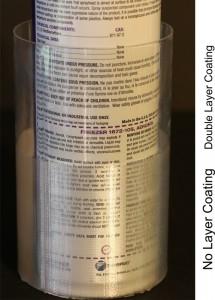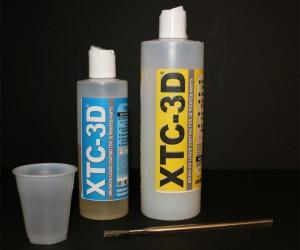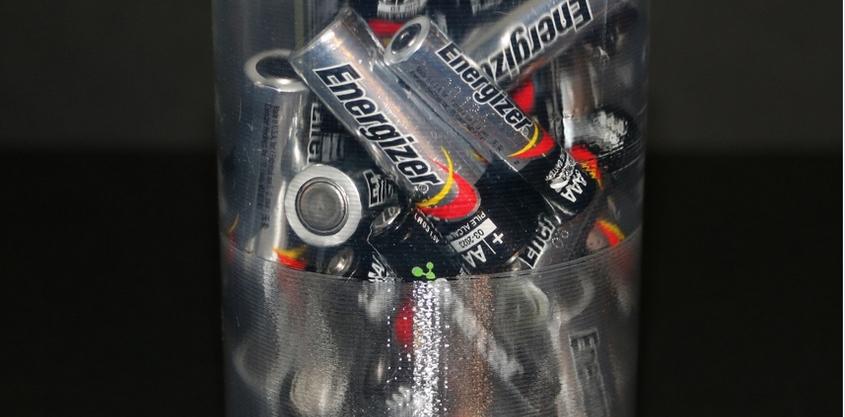taulman3D Hacks Their Clear t-glase 3D Printing Material to Achieve a More Glass-Like Appearance
 taulman3D, with their background in developing large scale optics, wanted to create a material which was capable of creating FFF parts with a glassy, transparent look.
taulman3D, with their background in developing large scale optics, wanted to create a material which was capable of creating FFF parts with a glassy, transparent look.
As they worked on the idea, it was decided that their t-glase product would function as the base polymer. When the developers made the decision to ramp up the clarity of t-glase, they found they were required to go with a “very slight trade off in the Tg in the final chemical formulation.”
That decision initially allowed designers to create jewelry components with a thicker layer construction during the printing process to give the parts a more “glass-like” appearance.
taulman’s t-glase is a high-strength PET polymer. It prints using standard settings for PLA, but with the exception that it requires a print temp of about 235 C. All the cooling profiles and techniques used for PLA apply to t-glase as well.
But the company says that large industrial users — such as AOSmith and hundreds of machine shops — use t-glase for its ‘non-delaminating’ features when it’s employed to print large parts. To attain the increased transparency needed of a final part, the researchers found that layer sizes needed to be increased — and that meant slowing the printer down to handle material flow requirements.
“We knew that a clear cylindrical thread laid down by most 3D Printers would result in zero depth-of-field, but this would eventually be an advantage,” says taulman’s website. “If we could find a clear, two-part epoxy that could be painted or brushed onto the part to negate the shape of the thread, we could convert the optical path to an ‘optical flat’ – a fancy way of saying ‘glass.'”
After testing a number of clear epoxies to solve the problem, the researchers found that most had one of two issues: the requirement of a vacuum build envelope to eliminate bubbles, or a lack of ‘self-settling’ or filling of gaps in the printed threads.
 Taulman then turned to a company which makes artistic and industrial epoxies, Smooth-On. The team found that one of the company’s products, XTC-3D, a material used for coating 3D printed parts, was ideal for taking on the issue and arriving at a “clear glass” look.
Taulman then turned to a company which makes artistic and industrial epoxies, Smooth-On. The team found that one of the company’s products, XTC-3D, a material used for coating 3D printed parts, was ideal for taking on the issue and arriving at a “clear glass” look.
Taulman now says they suggest the product to users in need of parts with an additional clarity. XTC-3D dries to a hard and durable enamel-type surface, requires only two coatings, and when used with a spinner to ensure an even coat, is essentially self-leveling, all leading the taulman team to recommend this product’s use with theirs.
And the results speak for themselves. You can see the detailed instructions on how to use t-glase and XTC-3D on the taulman site here.
Let us know what you think about how taulman3D’s hack will change how you might use clear printing filaments on the taulman3D t-glase Hack thread on 3DPB.com.
Subscribe to Our Email Newsletter
Stay up-to-date on all the latest news from the 3D printing industry and receive information and offers from third party vendors.
Print Services
You May Also Like
RAPID 2025: Stratasys & trinckle Announce Strategic Software Partnership
News continues to flood in from last week’s RAPID+TCT 2025, including a new partnership between AM market leader Stratasys and Berlin-based software company trinckle. By automating important steps in fixture...
RAPID TCT 2025: Spring in the Paris of the Midwest
I’m going to go out on a limb here and say that whomever coined the phrase Detroit: Paris of the Midwest, had not spent a lot of time in Paris...
3D Printing Financials: 3D Systems Looks to Bounce Back in 2025
After a challenging year for the industry, 3D Systems (NYSE: DDD) ended 2024 with results pointing to a reset, laying the groundwork for future profitability. The company didn’t post strong...
Printing Money Episode 27: Q4 2024 Public 3D Printing Earnings Review with Troy Jensen, Cantor Fitzgerald
Q2 2025 has already begun, but public markets reporting has only just finished with Q4 2024. To tie a bow on Q4 2024, we are thankful to have Troy Jensen...



























